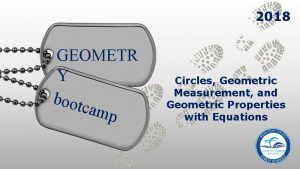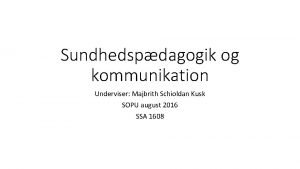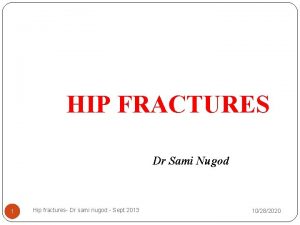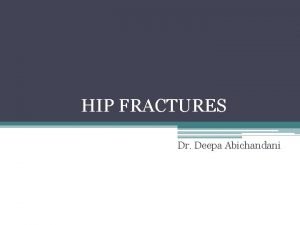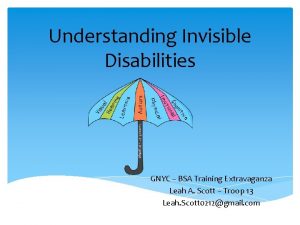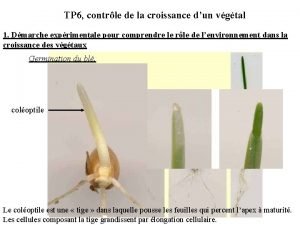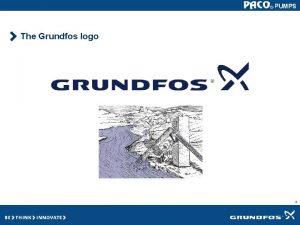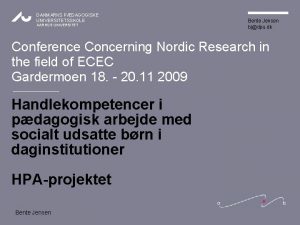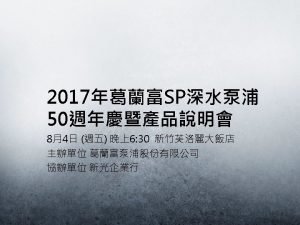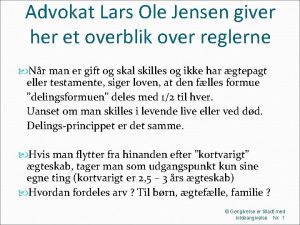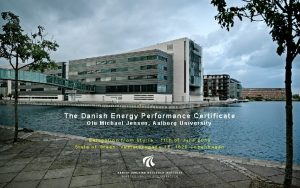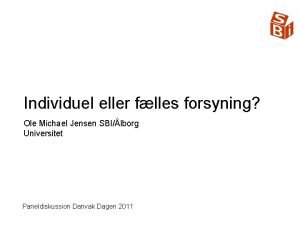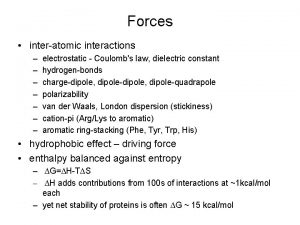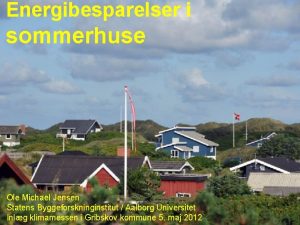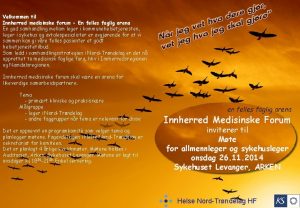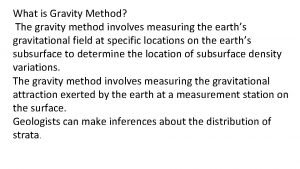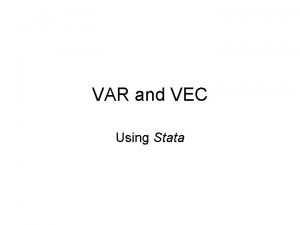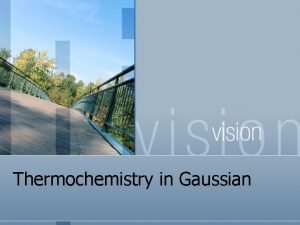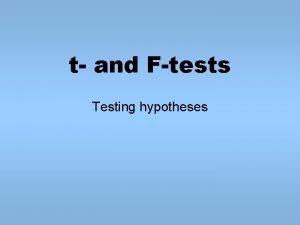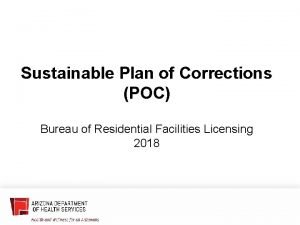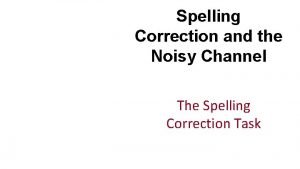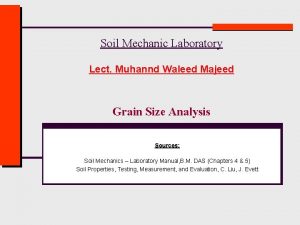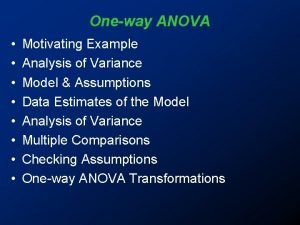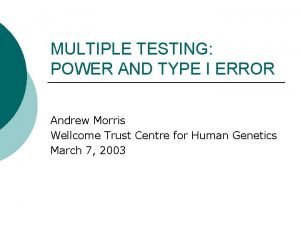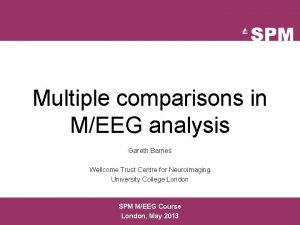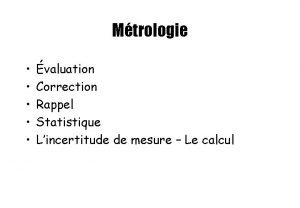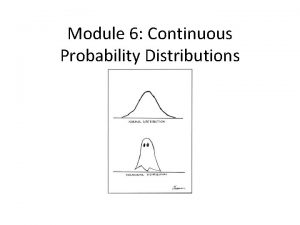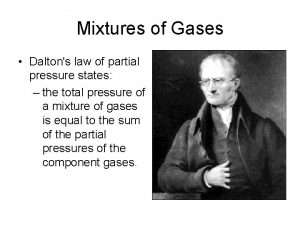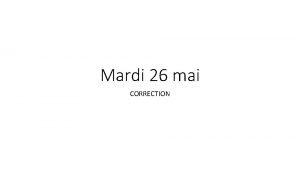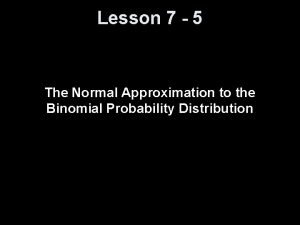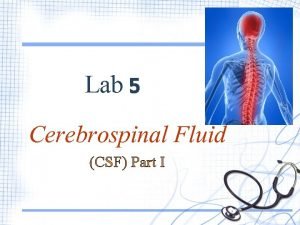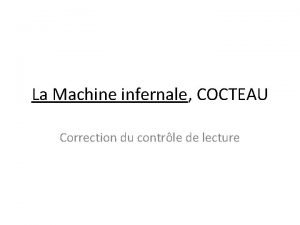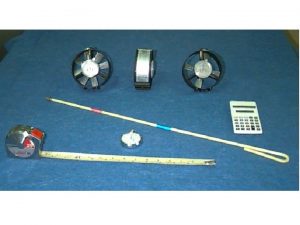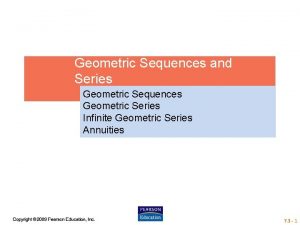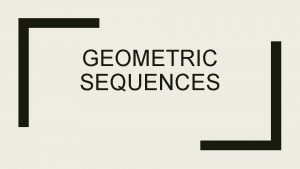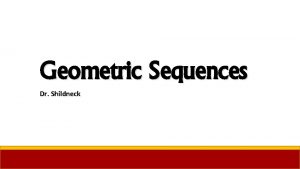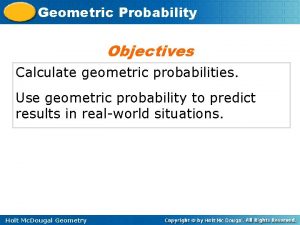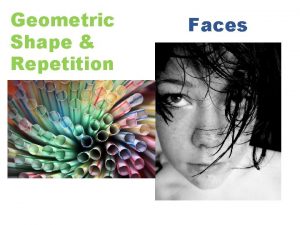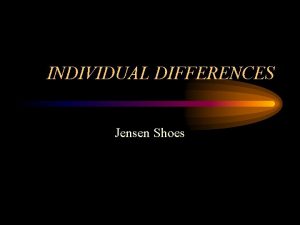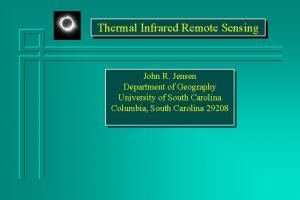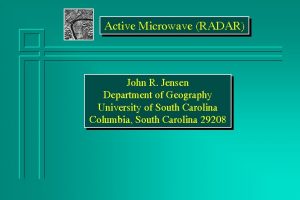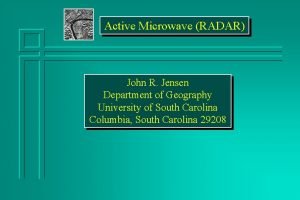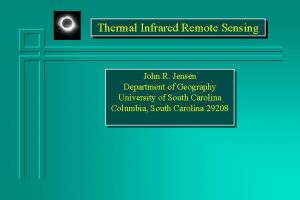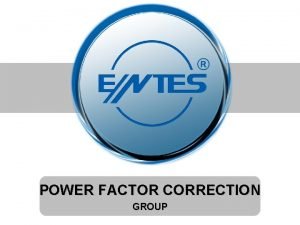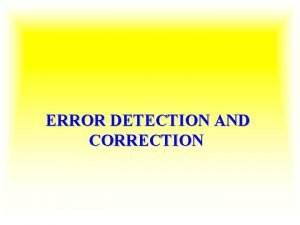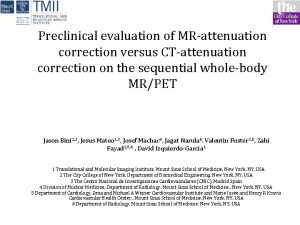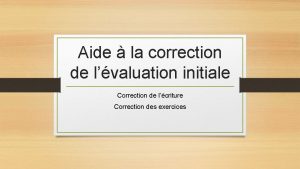Geometric Correction Dr John R Jensen Department of



























































- Slides: 59

Geometric Correction Dr. John R. Jensen Department of Geography University of South Carolina Columbia, SC 29208

Geometric Correction It is usually necessary to preprocess remotely sensed data and remove geometric distortion so that individual picture elements (pixels) are in their proper planimetric (x, y) map locations. This allows remote sensing–derived information to be related to other thematic information in geographic information systems (GIS) or spatial decision support systems (SDSS). Geometrically corrected imagery can be used to extract accurate distance, polygon area, and direction (bearing) information. Jensen, 2004

Internal and External Geometric Error Remotely sensed imagery typically exhibits internal and external geometric error. It is important to recognize the source of the internal and external error and whether it is systematic (predictable) or nonsystematic (random). Systematic geometric error is generally easier to identify and correct than random geometric error. Jensen, 2004

Internal Geometric Error Internal geometric errors are introduced by the remote sensing system itself or in combination with Earth rotation or curvature characteristics. These distortions are often systematic (predictable) and may be identified and corrected using pre-launch or in-flight platform ephemeris (i. e. , information about the geometric characteristics of the sensor system and the Earth at the time of data acquisition). Geometric distortions in imagery that can sometimes be corrected through analysis of sensor characteristics and ephemeris data include: • skew caused by Earth rotation effects, • scanning system–induced variation in ground resolution cell size, • scanning system one-dimensional relief displacement, and • scanning system tangential scale distortion. Jensen, 2004

Image Offset (skew) caused by Earth Rotation Effects Earth-observing Sun-synchronous satellites are normally in fixed orbits that collect a path (or swath) of imagery as the satellite makes its way from the north to the south in descending mode. Meanwhile, the Earth below rotates on its axis from west to east making one complete revolution every 24 hours. This interaction between the fixed orbital path of the remote sensing system and the Earth’s rotation on its axis skews the geometry of the imagery collected. Jensen, 2004

Image Skew a) Landsat satellites 4, 5, and 7 are in a Sunsynchronous orbit with an angle of inclination of 98. 2. The Earth rotates on its axis from west to east as imagery is collected. b) Pixels in three hypothetical scans (consisting of 16 lines each) of Landsat TM data. While the matrix (raster) may look correct, it actually contains systematic geometric distortion caused by the angular velocity of the satellite in its descending orbital path in conjunction with the surface velocity of the Earth as it rotates on its axis while collecting a frame of imagery. c) The result of adjusting (deskewing) the original Landsat TM data to the west to compensate for Earth rotation effects. Landsats 4, 5, and 7 use a bidirectional cross-track scanning mirror. Jensen, 2004

Scanning System-induced Variation in Ground Resolution Cell Size An orbital multispectral scanning system scans through just a few degrees off-nadir as it collects data hundreds of kilometers above the Earth’s surface (e. g. , Landsat 7 data are collected at 705 km AGL). This configuration minimizes the amount of distortion introduced by the scanning system. Conversely, a suborbital multispectral scanning system may be operating just tens of kilometers AGL with a scan field of view of perhaps 70°. This introduces numerous types of geometric distortion that can be difficult to correct. Jensen, 2004

The ground resolution cell size along a single across-track scan is a function of a) the distance from the aircraft to the observation where H is the altitude of the aircraft above ground level (AGL) at nadir and H sec f off-nadir; b) the instantaneous-field-of-view of the sensor, b, measured in radians; and c) the scan angle off-nadir, f. Pixels off-nadir have semi-major and semi-minor axes (diameters) that define the resolution cell size. The total field of view of one scan line is q. One-dimensional relief displacement and tangential scale distortion occur in the direction perpendicular to the line of flight and parallel with a line scan. Jensen, 2004

Ground Swath Width The ground swath width (gsw) is the length of the terrain strip remotely sensed by the system during one complete across-track sweep of the scanning mirror. It is a function of the total angular field of view of the sensor system, q, and the altitude of the sensor system above ground level, H. It is computed as: Jensen, 2004

Ground Swath Width The ground swath width of an across-track scanning system with a 90 total field of view and an altitude above ground level of 6000 m would be 12, 000 m: Jensen, 2004

The ground resolution cell size along a single across-track scan is a function of a) the distance from the aircraft to the observation where H is the altitude of the aircraft above ground level (AGL) at nadir and H sec f off-nadir; b) the instantaneous-field-of-view of the sensor, b, measured in radians; and c) the scan angle off-nadir, f. Pixels off-nadir have semimajor and semiminor axes (diameters) that define the resolution cell size. The total field of view of one scan line is q. One-dimensional relief displacement and tangential scale distortion occur in the direction perpendicular to the line of flight and parallel with a line scan. Jensen, 2004

Scanning System One-Dimensional Relief Displacement Images acquired using an across-track scanning system also contain relief displacement. However, instead of being radial from a single principal point as in a vertical aerial photograph, the displacement takes place in a direction that is perpendicular to the line of flight for each and every scan line. In effect, the ground-resolution element at nadir functions like a principal point for each scan line. At nadir, the scanning system looks directly down on a tank, and it appears as a perfect circle. The greater the height of the object above the local terrain and the greater the distance of the top of the object from nadir (i. e. , the line of flight), the greater the amount of one-dimensional relief displacement present. One-dimensional relief displacement is introduced in both directions away from nadir for each sweep of the across-track mirror.

a) Hypothetical perspective geometry of a vertical aerial photograph obtained over level terrain. Four 50 -ft-tall tanks are distributed throughout the landscape and experience varying degrees of radial relief displacement the farther they are from the principal point (PP). b) Across-track scanning system introduces one-dimensional relief displacement perpendicular to the line of flight and tangential scale distortion and compression the farther the object is from nadir. Linear features trending across the terrain are often recorded with s-shaped or sigmoid curvature characteristics due to tangential scale distortion and image compression.

Scanning System Tangential Scale Distortion The mirror on an across-track scanning system rotates at a constant speed and typically views from 70° to 120 of terrain during a complete line scan. Of course, the amount depends on the specific sensor system. The terrain directly beneath the aircraft (at nadir) is closer to the aircraft than the terrain at the edges during a single sweep of the mirror. Therefore, because the mirror rotates at a constant rate, the sensor scans a shorter geographic distance at nadir than it does at the edge of the image. This relationship tends to compress features along an axis that is perpendicular to the line of flight. The greater the distance of the ground-resolution cell from nadir, the greater the image scale compression. This is called tangential scale distortion. Objects near nadir exhibit their proper shape. Objects near the edge of the flight line become compressed and their shape distorted. For example, consider the tangential geometric distortion and compression of the circular swimming pools and one hectare of land the farther they are from nadir in the hypothetical diagram.

Scanning System Tangential Scale Distortion The tangential scale distortion and compression in the far range causes linear features such as roads, railroads, utility right of ways, etc. , to have an s-shape or sigmoid distortion when recorded on scanner imagery. Interestingly, if the linear feature is parallel with or perpendicular to the line of flight, it does not experience sigmoid distortion.

a) Hypothetical perspective geometry of a vertical aerial photograph obtained over level terrain. Four 50 -ft-tall tanks are distributed throughout the landscape and experience varying degrees of radial relief displacement the farther they are from the principal point (PP). b) Across-track scanning system introduces one-dimensional relief displacement perpendicular to the line of flight and tangential scale distortion and compression the farther the object is from nadir. Linear features trending across the terrain are often recorded with s-shaped or sigmoid curvature characteristics due to tangential scale distortion and image compression.

External Geometric Error External geometric errors are usually introduced by phenomena that vary in nature through space and time. The most important external variables that can cause geometric error in remote sensor data are random movements by the aircraft (or spacecraft) at the exact time of data collection, which usually involve: • altitude changes, and/or • attitude changes (roll, pitch, and yaw).

Attitude Changes Remote sensing systems flown at a constant altitude above ground level (AGL) result in imagery with a uniform scale all along the flightline. For example, a camera with a 12 -in. focal length lens flown at 20, 000 ft. AGL will yield 1: 20, 000 -scale imagery. If the aircraft or spacecraft gradually changes its altitude along a flightline, then the scale of the imagery will change. Increasing the altitude will result in smaller-scale imagery (e. g. , 1: 25, 000 -scale). Decreasing the altitude of the sensor system will result in larger-scale imagery (e. g, 1: 15, 000). The same relationship holds true for digital remote sensing systems collecting imagery on a pixel by pixel basis. The diameter of the spot size on the ground (D; the nominal spatial resolution) is a function of the instantaneous-field-of-view (b) and the altitude above ground level (H) of the sensor system, i. e. ,

a) Geometric modification in imagery may be introduced by changes in the aircraft or satellite platform altitude above ground level (AGL) at the time of data collection. Increasing altitude results in smaller-scale imagery while decreasing altitude results in larger-scale imagery. b) Geometric modification may also be introduced by aircraft or spacecraft changes in attitude, including roll, pitch, and yaw. An aircraft flies in the x-direction. Roll occurs when the aircraft or spacecraft fuselage maintains directional stability but the wings move up or down, i. e. they rotate about the x -axis angle (omega: w). Pitch occurs when the wings are stable but the fuselage nose or tail moves up or down, i. e. , they rotate about the y-axis angle (phi: f). Yaw occurs when the wings remain parallel but the fuselage is forced by wind to be oriented some angle to the left or right of the intended line of flight, i. e. , it rotates about the z-axis angle (kappa: k). Thus, the plane flies straight but all remote sensor data are displaced by k. Remote sensing data often are distorted due to a combination of changes in altitude and attitude (roll, pitch, and yaw).

Attitude Changes Satellite platforms are usually stable because they are not buffeted by atmospheric turbulence or wind. Conversely, suborbital aircraft must constantly contend with atmospheric updrafts, downdrafts, head-winds, tail-winds, and cross-winds when collecting remote sensor data. Even when the remote sensing platform maintains a constant altitude AGL, it may rotate randomly about three separate axes that are commonly referred to as roll, pitch, and yaw. Quality remote sensing systems often have gyro-stabilization equipment that isolates the sensor system from the roll and pitch movements of the aircraft. Systems without stabilization equipment introduce some geometric error into the remote sensing dataset through variations in roll, pitch, and yaw that can only be corrected using ground control points.

a) Geometric modification in imagery may be introduced by changes in the aircraft or satellite platform altitude above ground level (AGL) at the time of data collection. Increasing altitude results in smaller-scale imagery while decreasing altitude results in larger-scale imagery. b) Geometric modification may also be introduced by aircraft or spacecraft changes in attitude, including roll, pitch, and yaw. An aircraft flies in the x-direction. Roll occurs when the aircraft or spacecraft fuselage maintains directional stability but the wings move up or down, i. e. they rotate about the x -axis angle (omega: w). Pitch occurs when the wings are stable but the fuselage nose or tail moves up or down, i. e. , they rotate about the y-axis angle (phi: f). Yaw occurs when the wings remain parallel but the fuselage is forced by wind to be oriented some angle to the left or right of the intended line of flight, i. e. , it rotates about the z-axis angle (kappa: k). Thus, the plane flies straight but all remote sensor data are displaced by k. Remote sensing data often are distorted due to a combination of changes in altitude and attitude (roll, pitch, and yaw).

Ground Control Points Geometric distortions introduced by sensor system attitude (roll, pitch, and yaw) and/or altitude changes can be corrected using ground control points and appropriate mathematical models. A ground control point (GCP) is a location on the surface of the Earth (e. g. , a road intersection) that can be identified on the imagery and located accurately on a map. The image analyst must be able to obtain two distinct sets of coordinates associated with each GCP: • image coordinates specified in i rows and j columns, and • map coordinates (e. g. , x, y measured in degrees of latitude and longitude, feet in a state plane coordinate system, or meters in a Universal Transverse Mercator projection). The paired coordinates (i, j and x, y) from many GCPs (e. g. , 20) can be modeled to derive geometric transformation coefficients. These coefficients may be used to geometrically rectify the remote sensor data to a standard datum and map projection.

Ground Control Points Several alternatives to obtaining accurate ground control point (GCP) map coordinate information for image-to-map rectification include: • hard-copy planimetric maps (e. g. , U. S. G. S. 7. 5 -minute 1: 24, 000 -scale topographic maps) where GCP coordinates are extracted using simple ruler measurements or a coordinate digitizer; • digital planimetric maps (e. g. , the U. S. G. S. digital 7. 5 -minute topographic map series) where GCP coordinates are extracted directly from the digital map on the screen; • digital orthophotoquads that are already geometrically rectified (e. g. , U. S. G. S. digital orthophoto quarter quadrangles —DOQQ); and/or • global positioning system (GPS) instruments that may be taken into the field to obtain the coordinates of objects to within +20 cm if the GPS data are differentially corrected.

Types of Geometric Correction Commercially remote sensor data (e. g. , SPOT Image, Digital. Globe, Space Imaging) already have much of the systematic error removed. Unless otherwise processed, however, unsystematic random error remains in the image, making it non-planimetric (i. e. , the pixels are not in their correct x, y planimetric map position). Two common geometric correction procedures are often used by scientists to make the digital remote sensor data of value: • image-to-map rectification, and • image-to-image registration. The general rule of thumb is to rectify remotely sensed data to a standard map projection whereby it may be used in conjunction with other spatial information in a GIS to solve problems. Therefore, most of the discussion will focus on image-to-map rectification.

Image to Map Rectification Image-to-map rectification is the process by which the geometry of an image is made planimetric. Whenever accurate area, direction, and distance measurements are required, image -to-map geometric rectification should be performed. It may not, however, remove all the distortion caused by topographic relief displacement in images. The image-to-map rectification process normally involves selecting GCP image pixel coordinates (row and column) with their map coordinate counterparts (e. g. , meters northing and easting in a Universal Transverse Mercator map projection).

a) U. S. Geological Survey 7. 5 -minute 1: 24, 000 -scale topographic map of Charleston, SC, with three ground control points identified (13, 14, and 16). The GCP map coordinates are measured in meters easting ( x) and northing (y) in a Universal Transverse Mercator projection. b) Unrectified 11/09/82 Landsat TM band 4 image with the three ground control points identified. The image GCP coordinates are measured in rows and columns.

Image to Image Registration Image-to-image registration is the translation and rotation alignment process by which two images of like geometry and of the same geographic area are positioned coincident with respect to one another so that corresponding elements of the same ground area appear in the same place on the registered images. This type of geometric correction is used when it is not necessary to have each pixel assigned a unique x, y coordinate in a map projection. For example, we might want to make a cursory examination of two images obtained on different dates to see if any change has taken place.

Hybrid Approach to Image Rectification/Registration The same general image processing principles are used in both image rectification and image registration. The difference is that in image-tomap rectification the reference is a map in a standard map projection, while in image-to-image registration the reference is another image. If a rectified image is used as the reference base (rather than a traditional map) any image registered to it will inherit the geometric errors existing in the reference image. Because of this characteristic, most serious Earth science remote sensing research is based on analysis of data that have been rectified to a map base. However, when conducting rigorous change detection between two or more dates of remotely sensed data, it may be useful to select a hybrid approach involving both image-to-map rectification and image-to-image registration.

Image to Image Hybrid Rectification a) Previously rectified Landsat TM band 4 data obtained on November 9, 1982, resampled to 30 m pixels using nearest-neighbor resampling logic and a UTM map projection. b) Unrectified October 14, 1987, Landsat TM band 4 data to be registered to the rectified 1982 Landsat scene.

Image to Map Geometric Rectification Logic Two basic operations must be performed to geometrically rectify a remotely sensed image to a map coordinate system: • Spatial interpolation, and • Intensity interpolation.

Spatial Interpolation The geometric relationship between the input pixel coordinates (column and row; referred to as x , y ) and the associated map coordinates of this same point (x, y) must be identified. A number of GCP pairs are used to establish the nature of the geometric coordinate transformation that must be applied to rectify or fill every pixel in the output image (x, y) with a value from a pixel in the unrectified input image (x , y ). This process is called spatial interpolation.

Intensity Interpolation Pixel brightness values must be determined. Unfortunately, there is no direct one-to-one relationship between the movement of input pixel values to output pixel locations. It will be shown that a pixel in the rectified output image often requires a value from the input pixel grid that does not fall neatly on a row-and-column coordinate. When this occurs, there must be some mechanism for determining the brightness value (BV ) to be assigned to the output rectified pixel. This process is called intensity interpolation.

Spatial Interpolation Using Coordinate Transformations Image-to-map rectification requires that polynomial equations be fit to the GCP data using least-squares criteria to model the corrections directly in the image domain without explicitly identifying the source of the distortion. Depending on the distortion in the imagery, the number of GCPs used, and the degree of topographic relief displacement in the area, higher-order polynomial equations may be required to geometrically correct the data. The order of the rectification is simply the highest exponent used in the polynomial.

Concept of how different-order transformations fit a hypothetical surface illustrated in cross-section. a) Original observations. b) First-order linear transformation fits a plane to the data. c) Second-order quadratic fit. d) Third-order cubic fit.

NASA ATLAS near-infrared image of Lake Murray, SC, obtained on October 7, 1997, at a spatial resolution of 2 2 m. The image was rectified using a secondorder polynomial to adjust for the significant geometric distortion in the original dataset caused by the aircraft drifting off course during data collection.

Spatial Interpolation Using Coordinate Transformations Generally, for moderate distortions in a relatively small area of an image (e. g. , a quarter of a Landsat TM scene), a first-order, six-parameter, affine (linear) transformation is sufficient to rectify the imagery to a geographic frame of reference. This type of transformation can model six kinds of distortion in the remote sensor data, including: • translation in x and y, • scale changes in x and y, • skew, and • rotation.

Spatial Interpolation Using Coordinate. Transformations: Input-to-Output (Forward) Mapping When all six operations are combined into a single expression it becomes: where x and y are positions in the output-rectified image or map, and x and y represent corresponding positions in the original input image. These two equations can be used to perform what is commonly referred to as input-to-output, or forward-mapping. The equations function according to the logic shown in the next figure. In this example, each pixel in the input grid (e. g. , value 15 at x , y = 2, 3) is sent to an x, y location in the output image according to the six coefficients shown. Jensen, 2004

a) The logic of filling a rectified output matrix with values from an unrectified input image matrix using input-tooutput (forward) mapping logic. b) The logic of filling a rectified output matrix with values from an unrectified input image matrix using output-toinput (inverse) mapping logic and nearest-neighbor resampling. Output-to-input inverse mapping logic is the preferred methodology because it results in a rectified output matrix with values at every pixel location.

Spatial Interpolation Using Coordinate. Transformations: Input-to-Output (Forward) Mapping Forward mapping logic works well if we are rectifying the location of discrete coordinates found along a linear feature such as a road in a vector map. In fact, cartographic mapping and geographic information systems typically rectify vector data using forward mapping logic. However, when we are trying to fill a rectified output grid (matrix) with values from an unrectified input image, forward mapping logic does not work well. The basic problem is that the six coefficients may require that value 15 from the x , y location 2, 3 in the input image be located at a floating point location in the output image at x, y = 5, 3. 5, as shown. The output x, y location does not fall exactly on an integer x and y output map coordinate. In fact, using forward mapping logic can result in output matrix pixels with no output value. This is a serious condition and one that reduces the utility of the remote sensor data for useful applications. For this reason, most remotely sensed data are geometrically rectified using output-to-input or inverse mapping logic. Jensen, 2004

Spatial Interpolation Using Coordinate. Transformations: Output-to-Input (Inverse) Mapping Output-to-input, or inverse mapping logic, is based on the following two equations: where x and y are positions in the output-rectified image or map, and x and y represent corresponding positions in the original input image. The rectified output matrix consisting of x (column) and y (row) coordinates is filled in a systematic manner. Jensen, 2004

a) The logic of filling a rectified output matrix with values from an unrectified input image matrix using input-tooutput (forward) mapping logic. b) The logic of filling a rectified output matrix with values from an unrectified input image matrix using output-toinput (inverse) mapping logic and nearest-neighbor resampling. Output-to-input inverse mapping logic is the preferred methodology because it results in a rectified output matrix with values at every pixel location.

Spatial Interpolation Logic The goal is to fill a matrix that is in a standard map projection with the appropriate values from a nonplanimetric image. Jensen, 2004

Compute the Root-Mean-Squared Error of the Inverse Mapping Function Using the six coordinate transform coefficients that model distortions in the original scene, it is possible to use the output-to-input (inverse) mapping logic to transfer (relocate) pixel values from the original distorted image x , y to the grid of the rectified output image, x, y. However, before applying the coefficients to create the rectified output image, it is important to determine how well the six coefficients derived from the least-squares regression of the initial GCPs account for the geometric distortion in the input image. The method used most often involves the computation of the root-mean-square error (RMSerror) for each of the ground control points. Jensen, 2004

Spatial Interpolation Using Coordinate Transformation A way to measure the accuracy of a geometric rectification algorithm (actually, its coefficients) is to compute the Root Mean Squared Error (RMSerror) for each ground control point using the equation: Jensen, 2004 where: xorig and yorig are the original row and column coordinates of the GCP in the image and x’ and y’ are the computed or estimated coordinates in the original image when we utilize the six coefficients. Basically, the closer these paired values are to one another, the more accurate the algorithm (and its coefficients). The square root of the squared deviations represents a measure of the accuracy of each GCP. By computing RMSerror for all GCPs, it is possible to (1) see which GCPs contribute the greatest error, and 2) sum all the RMSerror.

Spatial Interpolation Using Coordinate Transformation All of the original GCPs selected are usually not used to compute the final six-parameter coefficients and constants used to rectify the input image. There is an iterative process that takes place. First, all of the original GCPs (e. g. , 20 GCPs) are used to compute an initial set of six coefficients and constants. The root mean squared error (RMSE) associated with each of these initial 20 GCPs is computed and summed. Then, the individual GCPs that contributed the greatest amount of error are determined and deleted. After the first iteration, this might only leave 16 of 20 GCPs. A new set of coefficients is then computed using the 16 GCPs. The process continues until the RMSE reaches a user-specified threshold (e. g. , <1 pixel error in the x-direction and <1 pixel error in the y-direction). The goal is to remove the GCPs that introduce the most error into the multiple-regression coefficient computation. When the acceptable threshold is reached, the final coefficients and constants are used to rectify the input image to an output image in a standard map projection as previously discussed. Jensen, 2004

Characteristics of Ground Control Points Point Number Order of Points Deleted Easting on Map X 1 Northing on Map Y 1 X’ pixel Y’ Pixel Total RMS error after this point deleted 1 12 597120 3, 627, 050 185 0. 501 2 9 597, 680 3, 627, 800 166 165 0. 663 …. . 20 1 601, 700 3, 632, 580 283 12 Total RMS error with all 20 GCPs used: 8. 542 11. 016 If we delete GCP #20, the RMSE will be 8. 452

Intensity Interpolation Intensity interpolation involves the extraction of a brightness value from an x , y location in the original (distorted) input image and its relocation to the appropriate x, y coordinate location in the rectified output image. This pixel-filling logic is used to produce the output image line by line, column by column. Most of the time the x and y coordinates to be sampled in the input image are floating point numbers (i. e. , they are not integers). For example, in the Figure we see that pixel 5, 4 (x, y) in the output image is to be filled with the value from coordinates 2. 4, 2. 7 (x , y ) in the original input image. When this occurs, there are several methods of brightness value (BV) intensity interpolation that can be applied, including: • nearest neighbor, • bilinear interpolation, and • cubic convolution. The practice is commonly referred to as resampling. Jensen, 2004

Nearest-Neighbor Resampling The brightness value closest to the predicted x’, y’ coordinate is assigned to the output x, y coordinate. Jensen, 2004

Bilinear Interpolation Assigns output pixel values by interpolating brightness values in two orthogonal direction in the input image. It basically fits a plane to the 4 pixel values nearest to the desired position (x’, y’) and then computes a new brightness value based on the weighted distances to these points. For example, the distances from the requested (x’, y’) position at 2. 4, 2. 7 in the input image to the closest four input pixel coordinates (2, 2; 3, 2; 2, 3; 3, 3) are computed. Also, the closer a pixel is to the desired x’, y’ location, the more weight it will have in the final computation of the average. where Zk are the surrounding four data point values, and D 2 k are the distances squared from the point in question (x’, y’) to these data points. Jensen, 2004

Bilinear Interpolation Jensen, 2004

Cubic Convolution Assigns values to output pixels in much the same manner as bilinear interpolation, except that the weighted values of 16 pixels surrounding the location of the desired x’, y’ pixel are used to determine the value of the output pixel. where Zk are the surrounding four data point values, and D 2 k are the distances squared from the point in question (x’, y’) to these data points. Jensen, 2004

Cubic Convolution Jensen, 2004

Universal Transverse Mercator (UTM) grid zone with associated parameters. This projection is often used when rectifying remote sensor data to a base map. It is found on U. S. Geological Survey 7. 5 - and 15 -minute quadrangles.

Image Mosaicking n rectified images requires several steps: 1. Individual images should be rectified to the same map projection and datum. Ideally, rectification of the n images is performed using the same intensity interpolation resampling logic (e. g. , nearest-neighbor) and pixel size (e. g. , multiple Landsat TM scenes to be mosaicked are often resampled to 30 m). Jensen, 2004

Image Mosaicking 2. One of the images to be mosaicked is designated as the base image. The base image and image 2 will normally overlap a certain amount (e. g. , 20% to 30%). 3. A representative geographic area in the overlap region is identified. This area in the base image is contrast stretched according to user specifications. The histogram of this geographic area in the base image is extracted. The histogram from the base image is then applied to image 2 using a histogram-matching algorithm. This causes the two images to have approximately the same grayscale characteristics. Jensen, 2004

Image Mosaicking 4. It is possible to have the pixel brightness values in one scene simply dominate the pixel values in the overlapping scene. Unfortunately, this can result in noticeable seams in the final mosaic. Therefore, it is common to blend the seams between mosaicked images using feathering. Some digital image processing systems allow the user to specific a feathering buffer distance (e. g. , 200 pixels) wherein 0% of the base image is used in the blending at the edge and 100% of image 2 is used to make the output image. At the specified distance (e. g. , 200 pixels) in from the edge, 100% of the base image is used to make the output image and 0% of image 2 is used. At 100 pixels in from the edge, 50% of each image is used to make the output file. Jensen, 2004

Mosaicking The seam between adjacent images being mosaicked may be minimized using a) cut-line feathering logic, or b) edge feathering. Jensen, 2004

Image Mosaicking Sometimes analysts prefer to use a linear feature such as a river or road to subdue the edge between adjacent mosaicked images. In this case, the analyst identifies a polyline in the image (using an annotation tool) and then specifies a buffer distance away from the line as before where the feathering will take place. It is not absolutely necessary to use natural or man-made features when performing cut-line feathering. Any user-specified polyline will do. Jensen, 2004

Mosaicking Jensen, 2004
 Circles geometric measurement and geometric properties
Circles geometric measurement and geometric properties Bjarne bruun jensen model
Bjarne bruun jensen model Penilaian kinerja portofolio
Penilaian kinerja portofolio Devorah leah jensen
Devorah leah jensen Olivia jensen mcgill
Olivia jensen mcgill Nugod
Nugod Hip dipa
Hip dipa Mn bombers softball
Mn bombers softball Godkenderapp
Godkenderapp Devorah leah jensen
Devorah leah jensen Boysen jensen
Boysen jensen Poul due jensen
Poul due jensen Svend eggert jensen
Svend eggert jensen Kristian hedegaard jensen
Kristian hedegaard jensen Oddvar johan jensen
Oddvar johan jensen Bente jensen dpu
Bente jensen dpu Be think innovate
Be think innovate Svend eggert jensen
Svend eggert jensen Elongation plants
Elongation plants Charlotte wilken jensen
Charlotte wilken jensen Erin brockovich movie characters
Erin brockovich movie characters Rodes harlin hall
Rodes harlin hall Lars ole jensen advokat
Lars ole jensen advokat Differgence
Differgence Arjay jensen
Arjay jensen Dennis ramsdahl jensen
Dennis ramsdahl jensen Ole michael jensen
Ole michael jensen Where was taylor swift born
Where was taylor swift born Jensen alpha ratio
Jensen alpha ratio Hagedorn jensen method principle
Hagedorn jensen method principle Ole michael jensen
Ole michael jensen Orthogontal
Orthogontal Ole michael jensen
Ole michael jensen Lene ness jensen
Lene ness jensen Toby jensen
Toby jensen Kim ebensgaard jensen
Kim ebensgaard jensen Gravity method
Gravity method Suspense account and correction of errors
Suspense account and correction of errors Vector autoregression
Vector autoregression Gaussian thermochemistry
Gaussian thermochemistry Bonferroni correction calculation
Bonferroni correction calculation Correction factor insulin
Correction factor insulin Sample plan of correction
Sample plan of correction Spelling
Spelling Waleed majeed
Waleed majeed Hypernatremia correction
Hypernatremia correction Corrected reticulocyte count formula
Corrected reticulocyte count formula Bonferroni correction calculation
Bonferroni correction calculation Bonferroni correction
Bonferroni correction Gareth barnes
Gareth barnes Correction
Correction Continuity correction
Continuity correction Equation for partial pressure
Equation for partial pressure Correction
Correction Continuity correction
Continuity correction How to solve for anion gap
How to solve for anion gap Csf cell count
Csf cell count Correction
Correction Bicarbonate deficit replacement
Bicarbonate deficit replacement Holding wind correction
Holding wind correction
